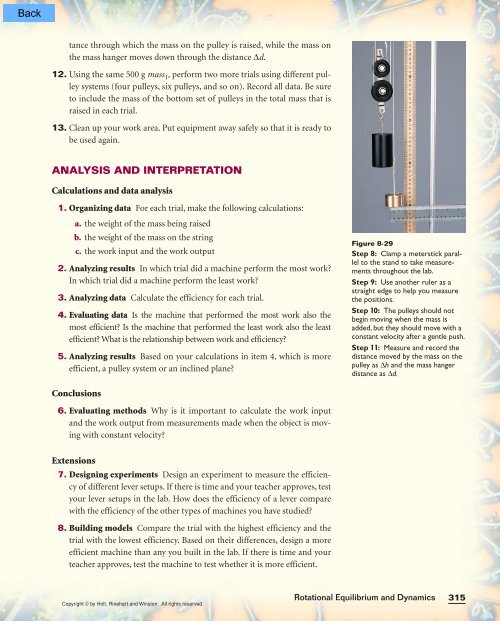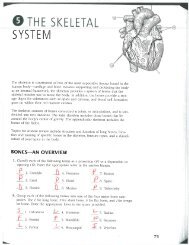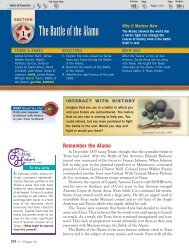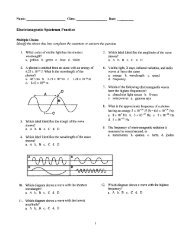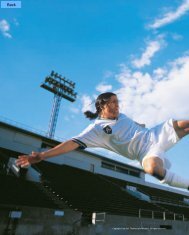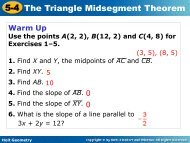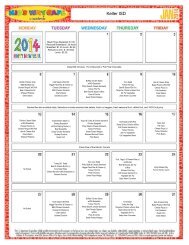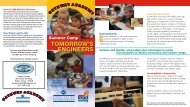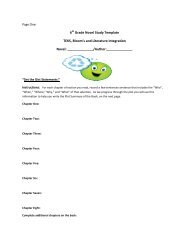Phys. Chapter 08 - Beau Chene High School Home Page
Phys. Chapter 08 - Beau Chene High School Home Page
Phys. Chapter 08 - Beau Chene High School Home Page
- No tags were found...
Create successful ePaper yourself
Turn your PDF publications into a flip-book with our unique Google optimized e-Paper software.
tance through which the mass on the pulley is raised, while the mass onthe mass hanger moves down through the distance ∆d.12. Using the same 500 g mass 1 , perform two more trials using different pulleysystems (four pulleys, six pulleys, and so on). Record all data. Be sureto include the mass of the bottom set of pulleys in the total mass that israised in each trial.13. Clean up your work area. Put equipment away safely so that it is ready tobe used again.ANALYSIS AND INTERPRETATIONCalculations and data analysis1. Organizing data For each trial, make the following calculations:a. the weight of the mass being raisedb. the weight of the mass on the stringc. the work input and the work output2. Analyzing results In which trial did a machine perform the most work?In which trial did a machine perform the least work?3. Analyzing data Calculate the efficiency for each trial.4. Evaluating data Is the machine that performed the most work also themost efficient? Is the machine that performed the least work also the leastefficient? What is the relationship between work and efficiency?5. Analyzing results Based on your calculations in item 4, which is moreefficient, a pulley system or an inclined plane?Figure 8-29Step 8: Clamp a meterstick parallelto the stand to take measurementsthroughout the lab.Step 9: Use another ruler as astraight edge to help you measurethe positions.Step 10: The pulleys should notbegin moving when the mass isadded, but they should move with aconstant velocity after a gentle push.Step 11: Measure and record thedistance moved by the mass on thepulley as ∆h and the mass hangerdistance as ∆d.Conclusions6. Evaluating methods Why is it important to calculate the work inputand the work output from measurements made when the object is movingwith constant velocity?Extensions7. Designing experiments Design an experiment to measure the efficiencyof different lever setups. If there is time and your teacher approves, testyour lever setups in the lab. How does the efficiency of a lever comparewith the efficiency of the other types of machines you have studied?8. Building models Compare the trial with the highest efficiency and thetrial with the lowest efficiency. Based on their differences, design a moreefficient machine than any you built in the lab. If there is time and yourteacher approves, test the machine to test whether it is more efficient.Copyright © by Holt, Rinehart and Winston. All rights reserved.Rotational Equilibrium and Dynamics315


